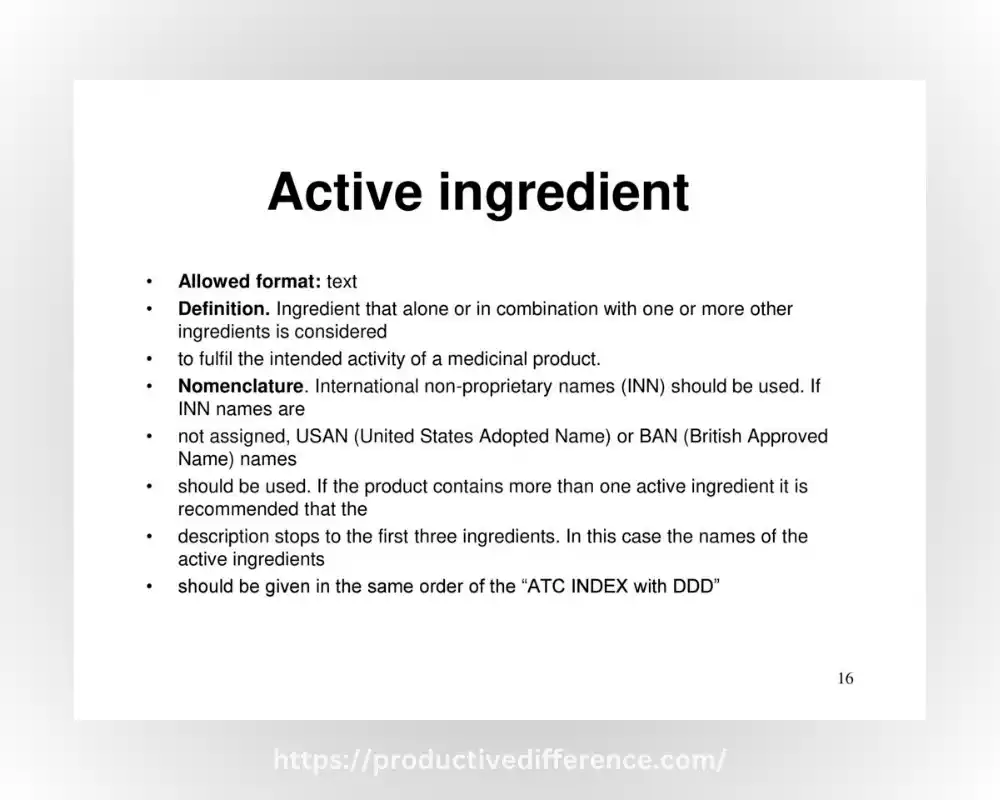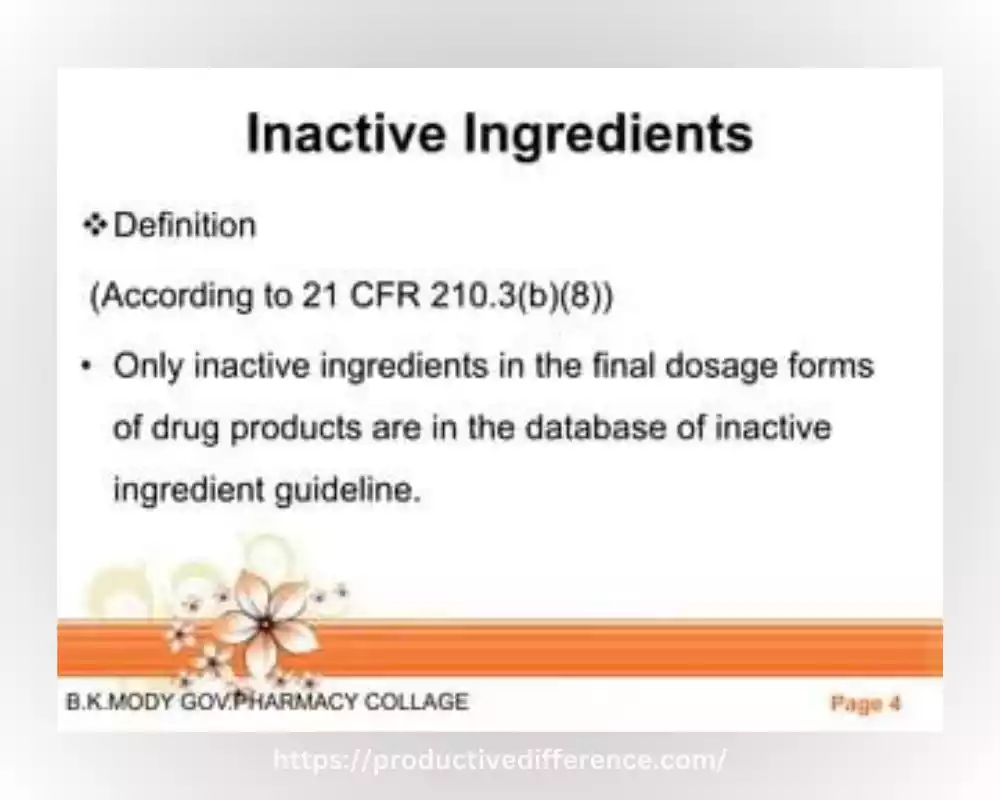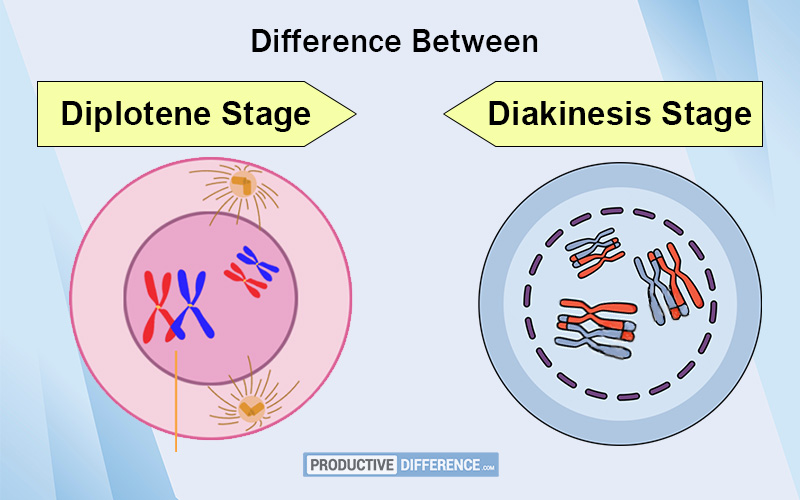Active and Inactive Ingredients play distinct roles in medications. Active ingredients are components that directly contribute to therapeutic benefits and outcomes of medications, and must be selected and tailored specifically to treat specific conditions or symptoms.
Excipients (also referred to as inactive ingredients) are substances added to medications for purposes other than therapeutic effect; examples include fillers, binders, preservatives, flavor enhancers or colorants. Inactive ingredients provide essential support to ensure a medication meets its formulation, stability, appearance and palatability requirements. While not having direct therapeutic benefits themselves, inactive ingredients play a vital role in assuring its quality, consistency and patient acceptance.
Understanding the difference between active and inactive ingredients is integral for patients and healthcare providers to making well-informed decisions about medication usage and managing potential allergies, sensitivities or interactions effectively.
Definition of active ingredients
Active ingredients are substances in a product that are primarily responsible for producing a specific therapeutic effect or desired outcome. These ingredients are typically biologically or chemically active and directly contribute to the product’s intended purpose. In medications, active ingredients are responsible for treating or managing specific symptoms or conditions.

In other products such as skincare or cleaning products, active ingredients provide the main functionality or benefit, such as moisturizing, exfoliating, disinfecting, or stain removal. Active ingredients are typically listed prominently on product labels and are regulated by authorities to ensure their efficacy and safety.
Definition of inactive ingredients
Inactive or “excipients,” as they’re more commonly referred to, are substances included in product formulation that do not possess therapeutic or curative qualities; active ingredients provide such effects by treating symptoms or providing specific benefits. Inactive ingredients have various functions in products, from improving stability, texture, appearance and taste to serving as fillers, binders preservatives flavorings colorants lubricants or even fillers for packaging materials.

Inactive ingredients are often integral parts of manufacturing processes, formulation stability and overall product quality. Although their role may not directly relate to its intended use or purpose of the product, inactive ingredients still play a crucial part in terms of overall performance, safety and user experience. Products often list inactive ingredients for consumers’ knowledge so that informed choices may be made on individual needs or sensitivities.
Importance of understanding the difference
Understanding the difference between active and inactive ingredients is crucial for several reasons:
- Safety and Efficacy: Active ingredients of a product are responsible for its intended effects, like treating medical conditions or providing specific benefits, so understanding which ones are active helps ensure that its purpose will be accomplished effectively. On the other hand, inactive ingredients might not directly contribute to its therapeutic effectiveness but still have an impact on safety and tolerability – knowing about potential allergens or substances they could be sensitive to can also provide peace of mind when choosing their next purchase.
- Allergies and Sensitivities: Preservatives, flavorings or dyes that contain inactive ingredients such as preservatives may lead to adverse reactions or allergies in some individuals. By being informed as to which are active and inactive components within an ingredient’s makeup can enable individuals to identify potential triggers of allergic reactions and make more informed choices based on individual sensitivity or allergy sensitivities or allergies.
- Interactions and Contraindications: Understanding the active ingredients in medications is especially important as they can interact with other drugs, substances, or medical conditions. Some active ingredients may have contraindications or warnings associated with them, and being aware of these can help individuals avoid potential complications or adverse effects.
- Informed Decision-making: Understanding both active and inactive ingredients allows consumers to make educated choices when selecting products to use, from active to inactive components. They can compare products based on their active components to determine which align with their specific needs and preferences; similarly, understanding inactive components helps individuals select those without unnecessary substances such as artificial additives or allergens that they’d rather forgo using.
- Regulatory Compliance: Regulatory authorities require accurate labeling of active and inactive ingredients on product packaging. By understanding these distinctions, consumers can verify that the product they are purchasing meets the necessary regulatory standards and ensure transparency in the ingredients used.
Active Ingredients
Active ingredients are substances which offer direct therapeutic or specific pharmacologic effects in products, acting as key elements responsible for fulfilling its intended use or desired outcome. Active ingredients can be found in many items including medications, skincare products and cleaning solutions.
Here are just a few commonly recognized examples:
- Medications:
- Acetaminophen: Used for pain relief and reducing fever.
- Ibuprofen: Nonsteroidal anti-inflammatory drugs (NSAIDs) provide relief for pain, inflammation and fever.
- Diphenhydramine: An antihistamine used for allergy relief and as a sleep aid.
- Omeprazole: A proton pump inhibitor (PPI) used to reduce stomach acid production for treating acid reflux and ulcers.
- Skincare Products:
- Retinol: A derivative of vitamin A that helps reduce the signs of aging and improve skin texture.
- Salicylic acid: An exfoliating agent that helps unclog pores and treat acne.
- Hyaluronic acid: Provides hydration and helps plump the skin.
- Benzoyl peroxide: Used for treating acne by killing bacteria on the skin.
- Cleaning Products:
- Sodium hypochlorite: A disinfecting agent commonly found in household bleach.
- Hydrogen peroxide: Used as a cleaning and disinfecting agent.
- Ammonia: An effective degreaser and cleaner for glass and other surfaces.
- Enzymes: Found in certain stain removers, they break down organic stains like blood, food, or grass.
Note that active ingredients used in products vary based on brand, formulation and intended purpose. Reading product labels or consulting with healthcare professionals or experts for additional insight on active ingredients used and their effects is advised for greater clarity on this matter.
Inactive Ingredients
Inactive ingredients, also known as excipients or non-medicinal ingredients, are substances included in a product formulation that do not have a direct therapeutic effect but serve various functions in the product. These ingredients are typically added for reasons such as formulation stability, product appearance, taste, texture, or to aid in the manufacturing process.
Here are some examples of commonly used inactive ingredients in various products:
- Fillers and Diluents:
- Lactose: Used as a filler in medications to increase the volume of the tablet or capsule.
- Microcrystalline cellulose: Provides bulk and improves the flow of powders or granules in tablet formulations.
- Starch: Acts as a binder or filler in tablets and capsules.
- Talc: Provides lubrication and prevents sticking of powdered formulations.
- Binders and Disintegrants:
- Polyvinylpyrrolidone (PVP): Helps bind tablet ingredients together and improve tablet hardness.
- Croscarmellose sodium: An disintegrant that promotes the disintegration of tablets or capsules in the gastrointestinal tract.
- Sodium starch glycolate: Another disintegrant that helps break down tablets in the stomach for better absorption.
- Preservatives:
- Methylparaben: Used to prevent microbial growth and extend the shelf life of products.
- Propylparaben: Like its cousin methylparaben, butylparaben acts as a preservative and helps avoid product spoilage.
- Benzyl alcohol: A common preservative used in topical products and injectable medications.
- Flavorings and Sweeteners:
- Artificial or natural flavors: Added to improve the taste or aroma of oral products, such as syrups or chewable tablets.
- Sucrose (table sugar): Used as a sweetener in certain medications and oral suspensions.
- Aspartame: An artificial sweetener used in various products as a sugar substitute.
- Colorants:
- Titanium dioxide: A white pigment used to provide color or opacity in products like cosmetics and medications.
- FD&C dyes: Synthetic colorants approved for use in food, drugs, and cosmetics.
These examples of inactive ingredients vary based on product and formulation; their precise use depends entirely upon that decision. While most individuals consider inactive ingredients safe for consumption, those with allergies or sensitivities should remain cautious by checking product labels to check for allergens.
Key Differences Between Active and Inactive Ingredients
There are several key differences between active and inactive ingredients.
These differences include:
- Purpose and Functionality:
- Active Ingredients: Active ingredients have a specific therapeutic effect or provide a desired outcome in a product. They directly contribute to the product’s intended purpose, such as treating symptoms or delivering a particular benefit.
- Inactive Ingredients: Inactive ingredients do not produce direct therapeutic benefits but serve other functions instead, including increasing stability or texture improvements or providing color enhancement or prolonging shelf life. As part of formulation or manufacturing processes for products but without providing desired therapeutic outcomes.
- Regulatory Requirements and Labeling:
- Active Ingredients: Active ingredients are typically listed prominently on product labels. They are regulated by authorities to ensure their efficacy, safety, and appropriate use. The labeling of active ingredients is required to inform consumers about the specific substances responsible for the product’s therapeutic effects.
- Inactive Ingredients: Inactive ingredients may also be listed on product labels, though usually less prominently than their active counterparts. Although regulatory authorities may provide specific labeling requirements or guidelines regarding specific inactive substances that cause allergies or adverse reactions, their attention typically lies elsewhere – typically active ingredients.
- Impact on Product Efficacy and Safety:
- Active Ingredients: The presence and concentration of active ingredients directly impact the efficacy and safety of a product. They are responsible for producing the desired therapeutic effects or outcomes. The effectiveness of a medication, for example, relies on the presence of an appropriate active ingredient at the correct dosage.
- Inactive Ingredients: While inactive ingredients do not contribute directly to the therapeutic effect, they can still impact the product’s safety and tolerability. Some individuals may have allergies or sensitivities to certain inactive ingredients. Inactive ingredients can also affect the overall user experience, such as texture, taste, or appearance, which can indirectly influence the perceived efficacy of the product.
- Potential for Allergies or Adverse Reactions:
- Active Ingredients: Some individuals may have specific allergies or sensitivities to active ingredients. It is essential to be aware of the active ingredients in products to avoid potential adverse reactions or contraindications. Allergies to active ingredients can range from mild skin irritations to severe allergic reactions.
- Inactive Ingredients: Inactive ingredients, such as preservatives, flavorings, or dyes, can also trigger allergies or sensitivities in certain individuals. These reactions may occur even if the inactive ingredients are present in small amounts. Understanding the inactive ingredients allows individuals to identify potential allergens and make informed choices based on their specific sensitivities or allergies.
By recognizing the differences between active and inactive ingredients, consumers can better understand the product they are using, make informed decisions, and minimize potential risks or adverse reactions.
Importance of Identifying and Understanding Active and Inactive Ingredients
Identifying and understanding active and inactive ingredients in products is important for several reasons:
- Consumer Awareness and Informed Decision-Making: Understanding the active and inactive ingredients in a product empowers consumers to make informed decisions. By reading and understanding ingredient labels, individuals can assess whether a product aligns with their needs, preferences, and potential sensitivities or allergies. It allows consumers to choose products that are most suitable for their specific requirements.
- Impact on Product Effectiveness and Desired Outcomes: Active ingredients are responsible for the intended effects of a product. By identifying and understanding the active ingredients, consumers can evaluate the potential effectiveness of a product in addressing their concerns or achieving the desired outcomes. It helps ensure that the product chosen aligns with the individual’s expectations.
- Recognizing Potential Interactions or Side Effects: Active ingredients in medications can interact with other drugs, substances, or medical conditions. Understanding the active ingredients helps individuals identify potential interactions or contraindications, which can have implications for safety and efficacy. It allows individuals to make informed decisions about the use of a product, especially when multiple products are being used concurrently.
- Identifying Personal Sensitivities or Allergies: Preservatives, flavorings or dyes that contain inactive ingredients such as preservatives can sometimes trigger adverse reactions in some individuals and allergies in others. Being aware of inactive ingredients allows people to identify potential triggers of allergic responses or sensitivities; being informed enables individuals to avoid products containing substances they’re sensitive to thereby decreasing risks of side effects and adverse reactions.
- Safety Considerations: Understanding the active and inactive ingredients in products is crucial for safety considerations. It allows individuals to verify that the product complies with regulatory standards and labeling requirements. Additionally, being aware of the active ingredients helps individuals identify and report any potential adverse reactions or side effects to healthcare professionals or regulatory authorities.
By identifying and understanding active and inactive ingredients, consumers can make informed choices, maximize product effectiveness, minimize potential risks or adverse reactions, and ensure that their preferences and needs are met. It promotes consumer empowerment and encourages responsible product usage.
Comparison chart
| Aspect | Active Ingredients | Inactive Ingredients |
|---|---|---|
| Purpose | Produces specific therapeutic effects or desired outcomes | Supports formulation stability, texture, appearance, etc. |
| Functionality | Directly contributes to the product’s intended purpose | Does not have a direct therapeutic effect |
| Regulatory Requirements | Listed prominently on product labels | Also listed on labels, but not as prominently |
| Impact on Product Efficacy | Determines the effectiveness of the product | Does not directly impact the product’s therapeutic efficacy |
| Potential for Allergies | Some individuals may have allergies or sensitivities | Can also trigger allergies or sensitivities in certain cases |
| Interactions with Medications | Can interact with other drugs, substances, or conditions | Does not typically interact with medications |
| Safety Considerations | Regulated to ensure efficacy and safety | Can impact the safety and tolerability of the product |
| Examples | Acetaminophen, retinol, sodium hypochlorite | Fillers, binders, preservatives, flavorings, colorants, etc. |
How do I know which active and inactive ingredients my medication contains?
To find out which active and inactive ingredients are present in your medication, you can follow these steps:
- Read the Package Insert or Patient Information Leaflet: Medications typically come with a package insert or patient information leaflet that provides detailed information about the product. Look for the section that lists the ingredients. Active ingredients are usually mentioned first, followed by inactive ingredients.
- Check the Product Label: The product label on the medication’s packaging should list the active and inactive ingredients. Look for a section that specifically states “Active Ingredients” or “Inactive Ingredients.” Inactive ingredients are sometimes referred to as “non-medicinal ingredients” or “excipients.”
- Consult a Healthcare Professional: If you have questions or are uncertain of the active and inactive ingredients in your medication, or have specific issues or queries related to it, consulting a healthcare professional would always be beneficial. They can provide detailed information regarding its contents while answering any specific inquiries that arise from that.
- Online Resources: You can also search for the medication name and manufacturer’s information online. Many pharmaceutical companies provide detailed product information on their websites, including the active and inactive ingredients. Additionally, reputable medical websites or databases may provide information about specific medications, including their ingredient composition.
By following these steps, you can obtain the necessary information about the active and inactive ingredients in your medication. It’s important to be aware of any specific allergies or sensitivities you may have and inform your healthcare provider about them to ensure safe and appropriate medication use.
Are there any risks I might face from active or inactive ingredients in medication?
Both active and inactive ingredients in medication can pose certain risks, although the nature and level of risk may differ.
Here are some potential risks associated with each:
Active Ingredients:
- Adverse Reactions: Active ingredients can cause adverse reactions in some individuals, ranging from mild side effects like nausea or dizziness to severe allergic reactions or drug interactions. It’s important to be aware of potential side effects associated with the active ingredient in your medication and consult a healthcare professional if you experience any concerning symptoms.
- Allergies or Sensitivities: Some individuals may be allergic or sensitive to certain active ingredients. Allergic reactions can range from mild skin rashes to severe anaphylaxis. It is essential to inform your healthcare provider about any known allergies or sensitivities to specific medications or ingredients.
- Drug Interactions: Active ingredients can interact with other medications, herbal supplements, or medical conditions. These interactions can reduce the effectiveness of the medication or lead to potentially harmful side effects. It’s crucial to inform your healthcare provider about all the medications you are taking to avoid any potential drug interactions.
Inactive Ingredients:
- Allergic Reactions: Preservatives, flavorings or dyes used as inactive ingredients such as preservatives can trigger allergic reactions in certain individuals. Lactose- and certain food dye-related allergies have been known to trigger such responses; reading product labels carefully in order to be aware of potential allergens can help mitigate potential problems and avoid adverse reactions.
- Intolerance or Sensitivities: Some individuals may have intolerances or sensitivities to certain inactive ingredients. For example, some people may experience gastrointestinal discomfort or bloating due to lactose or have sensitivities to artificial sweeteners. Understanding the inactive ingredients can help individuals avoid products that contain substances they are sensitive to.
- Contamination or Impurities: In rare cases, inactive ingredients may be a source of impurities or contaminants. This can occur due to issues during the manufacturing process. Regulatory authorities have guidelines in place to ensure the safety and quality of medications, but it’s important to purchase medications from reputable sources.
To minimize the risks associated with active and inactive ingredients in medications, it is crucial to:
- Inform your healthcare provider about any known allergies, sensitivities, or medical conditions.
- Read product labels and package inserts carefully to understand the ingredients.
- Follow the prescribed dosage and usage instructions.
- Report any adverse reactions or side effects to your healthcare provider.
- Consult a healthcare professional if you have any concerns or questions about your medication.
By being informed and proactive, you can help ensure the safe and effective use of medications.
Conclusion
Knowledge of active and inactive ingredients is vital in making informed choices regarding their personal care products. Active ingredients provide therapeutic effects or desired outcomes from using them while inactive ones serve other functions during production processes.
Consumers can evaluate a product’s potential effectiveness and safety by being aware of its active ingredients, and identify any interactions or contraindications, then choose those products which meet their individual needs and preferences. By understanding inactive ingredients as well, individuals can avoid potential allergens or substances which they might be sensitive to ensuring safer and more tailored selections of products.


